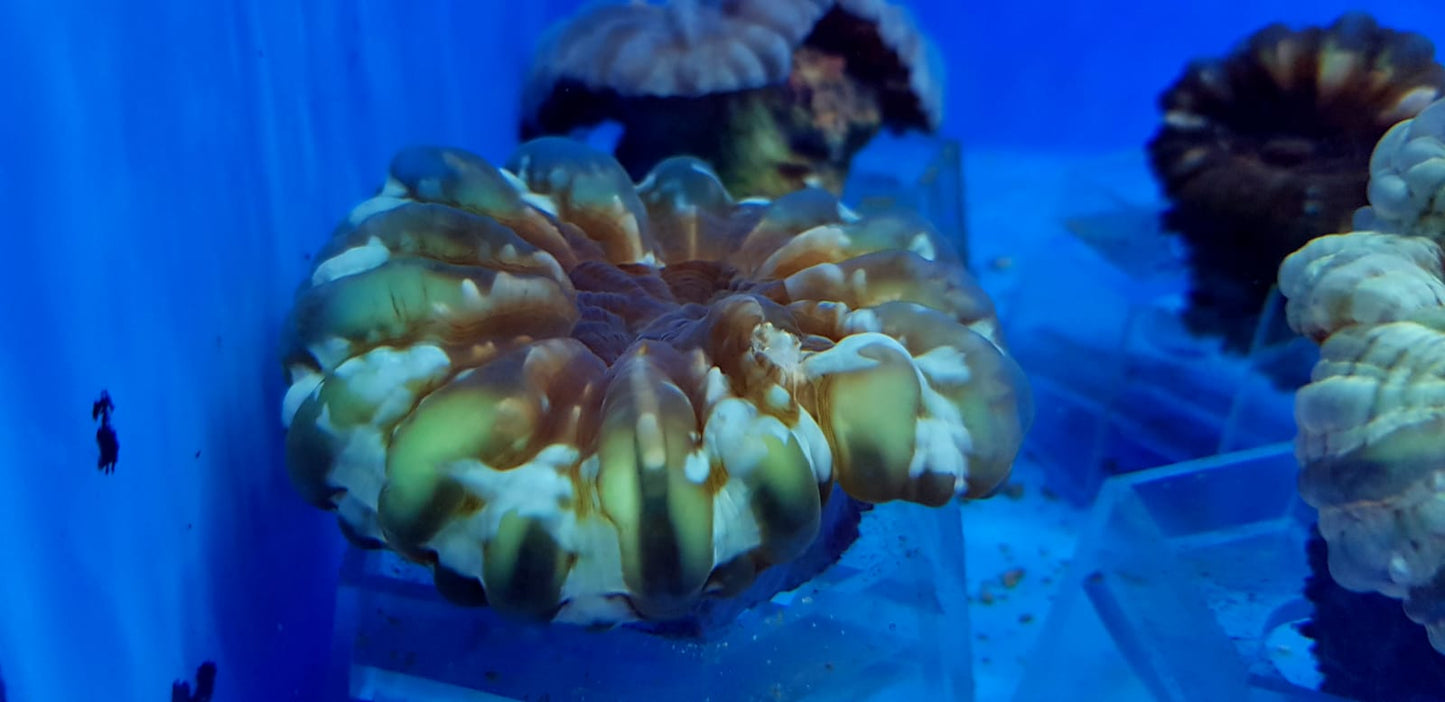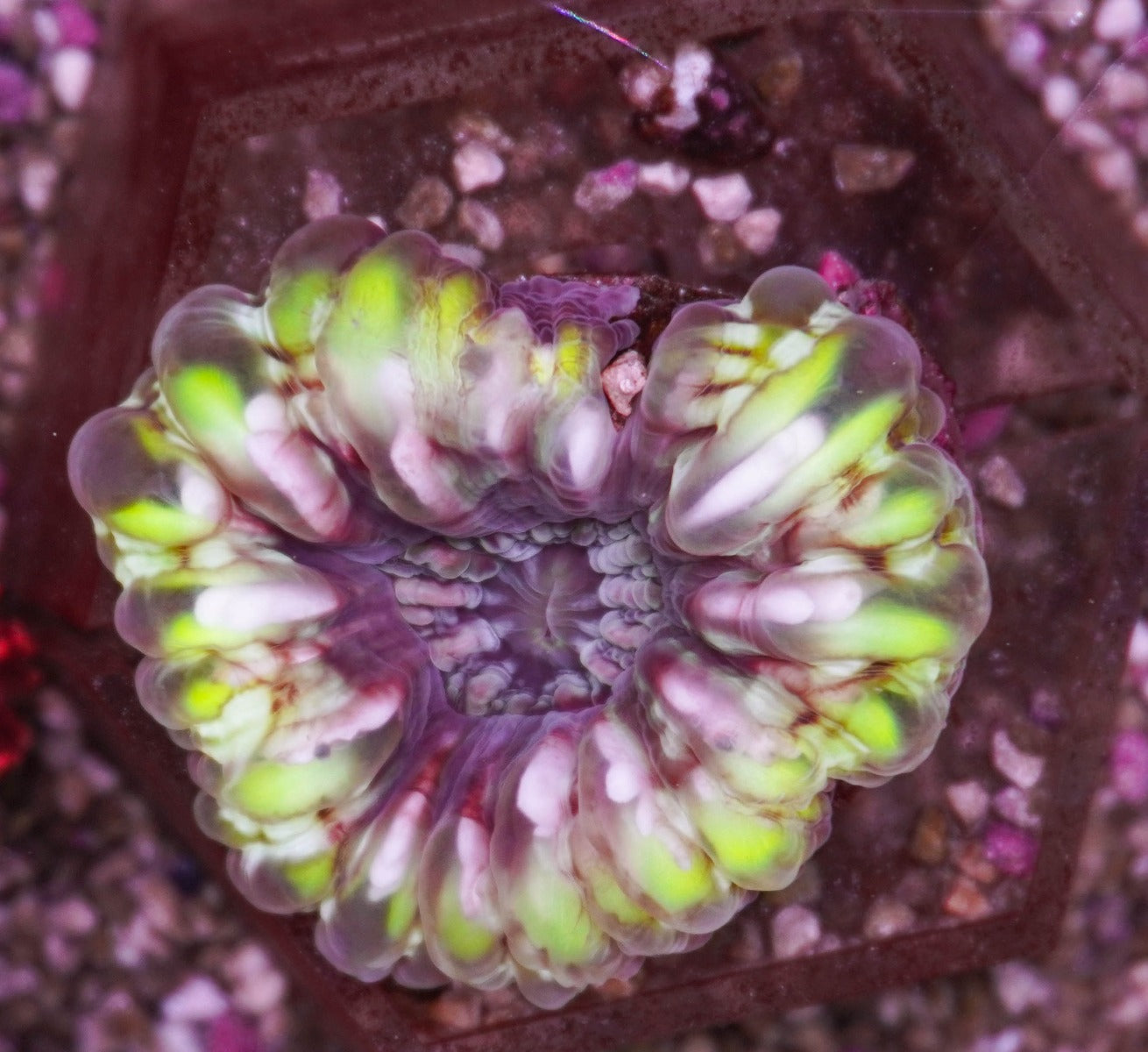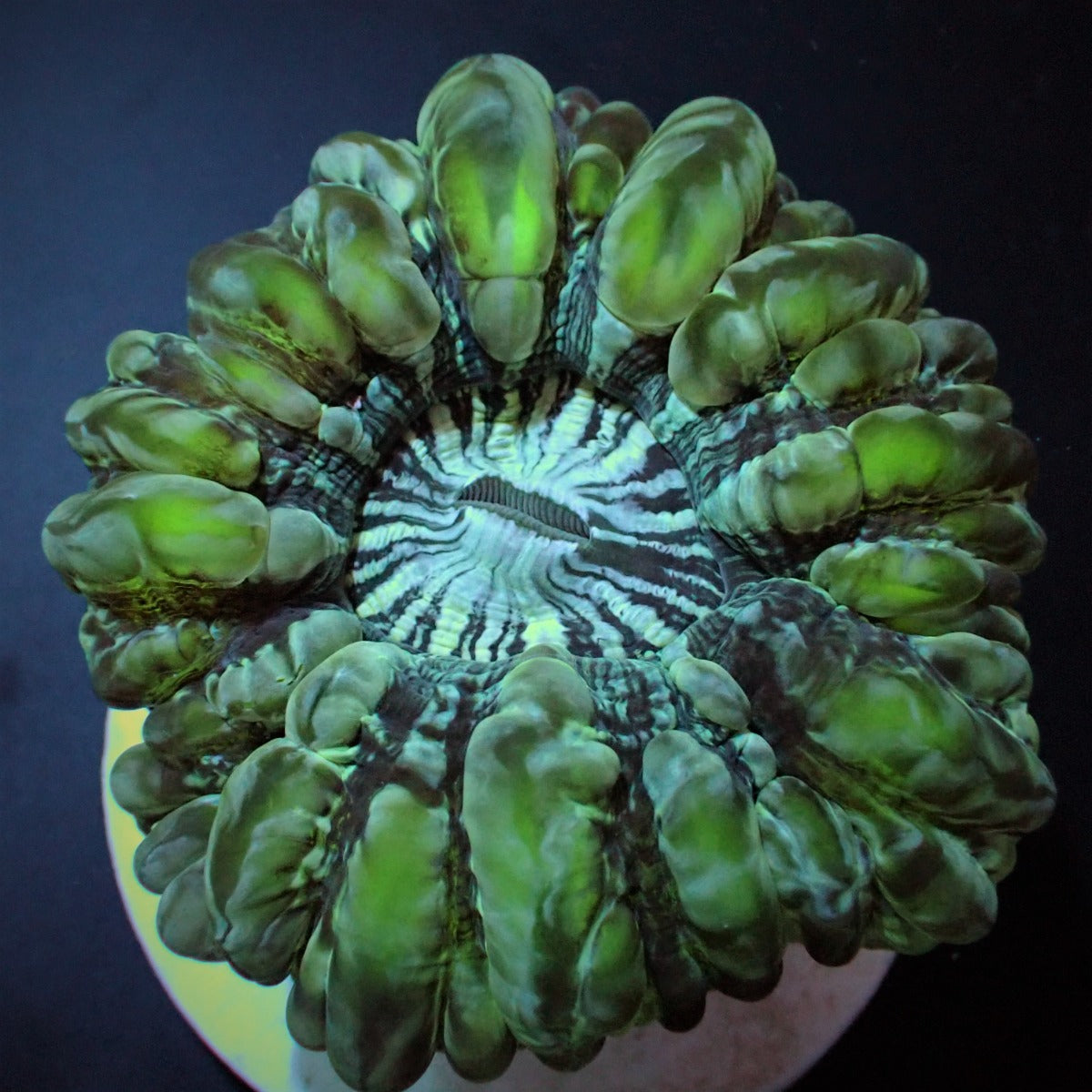Coralreef Store
Cynarina lacrymalis (Green)
Cynarina lacrymalis (Green)
Couldn't load pickup availability
Indo-Pacific
Moderate Care Level
For Intermediate Hobbyists
Moderate to Low Placement in Reef Tank
Cynarina lacrymalis (Green), commonly known as the Green Bubble Coral, is a species of large polyp stony (LPS) coral found in the Indo-Pacific region. This coral is well-known for its large, fleshy, and bulbous appearance, with vibrant green coloration, often with contrasting patterns or highlights. The species has a distinctive spherical shape, with long, tentacle-like extensions that can inflate and retract. As a solitary coral, it grows as a single polyp, making it quite striking in a reef aquarium. While Cynarina lacrymalis is moderately hardy, it requires stable water conditions, making it ideal for intermediate hobbyists.
Placement in the Tank
Cynarina lacrymalis (Green) should be placed in a moderate to low light area of the reef tank, ideally in the lower or middle sections. While it can tolerate moderate lighting, too much intensity can cause the coral to become stressed and lead to bleaching or tissue retraction. It thrives under light levels of 50-150 PAR, making it perfect for shaded or partially shaded spots in the tank.
For water flow, gentle to moderate currents are ideal. Too much water movement can cause the coral's tentacles to retract or become damaged, while stagnant water may hinder feeding and tissue health. A light, undulating flow is best to ensure optimal conditions for this coral.
Water Parameters
Maintaining stable water parameters is essential for the health and longevity of Cynarina lacrymalis (Green). The recommended water parameters are:
- Temperature: 24°C to 28°C (75°F to 82°F), with 26°C (79°F) being optimal.
- Salinity: 1.023–1.025 specific gravity (SG), with 1.024 being ideal.
- pH: 8.1 to 8.4, ideally 8.2.
- Alkalinity (dKH): 8-12 dKH, with 9-10 dKH being optimal for healthy growth.
- Calcium: 400-450 ppm, important for skeletal development.
- Magnesium: 1250-1350 ppm.
- Nitrate: Less than 5 ppm, as elevated levels can cause stress.
- Phosphate: Below 0.03 ppm, to avoid algae competition for nutrients.
Feeding
Cynarina lacrymalis (Green) is a photosynthetic coral that depends on its symbiotic relationship with zooxanthellae for energy via photosynthesis. However, it also benefits from supplemental feeding in aquariums with limited plankton availability. Offer meaty foods like mysis shrimp, zooplankton, or liquid coral foods. Feeding once or twice a week is typically sufficient. It’s important to avoid overfeeding, as this can lead to water quality issues.
Maintenance and Care
Regular care and maintenance are key to keeping Cynarina lacrymalis (Green) healthy:
- Water Changes: Perform regular water changes (10-15% weekly) to maintain water quality and remove excess nutrients.
- Water Parameter Monitoring: Regularly check parameters like pH, calcium, nitrate, and alkalinity to ensure they stay within optimal ranges.
- Space and Pruning: This coral doesn’t require frequent pruning but should have enough space to expand. It can become aggressive with neighboring corals, so providing it with space is important.
- Pest Control: Watch for pests such as Aiptasia or flatworms, which can damage the coral. Immediate action should be taken if pests are found.
Compatibility
Cynarina lacrymalis (Green) is a relatively peaceful coral but can be territorial. It does well with other non-aggressive LPS corals and soft corals but should be kept away from aggressive species like SPS corals or corals with long tentacles that could sting it. Due to its large size and potential for aggression, it should be placed in an area where it has enough space to expand without crowding other corals.
Conclusion
Cynarina lacrymalis (Green) is a beautiful, unique coral that can make a striking addition to any reef aquarium. With its vibrant green coloration and bulbous appearance, it adds both beauty and dimension to the tank. While it has moderate care requirements, it is a great choice for intermediate hobbyists who are experienced with maintaining stable water conditions. By ensuring proper placement, water flow, lighting, and feeding, this coral can thrive and provide a stunning visual centerpiece for your reef tank.
Share






